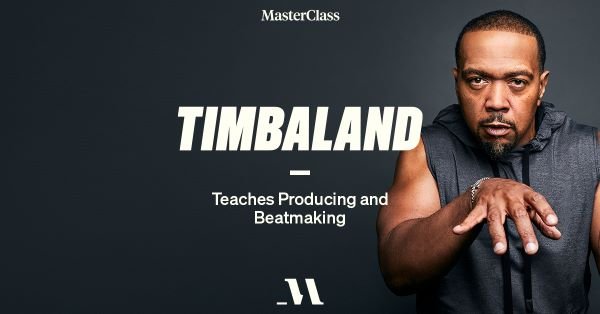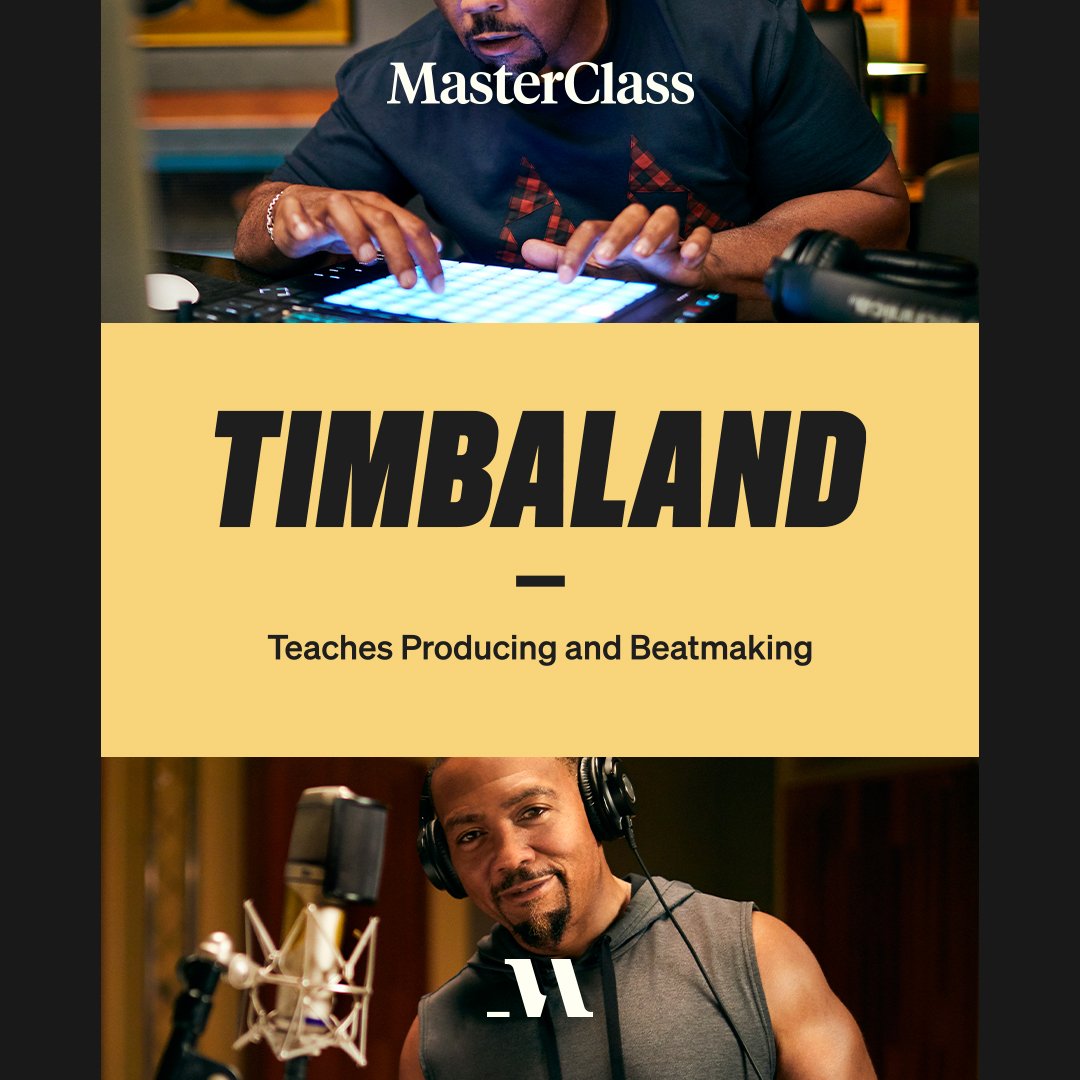As a music producer, I’ve always been fascinated by the unique sounds and innovative beats that define Timbaland’s work. When I heard about the Timbaland MasterClass, I knew I had to check it out. This online course promises to unveil the secrets behind the legendary producer’s hit-making process, offering aspiring beatmakers a chance to learn from one of the industry’s best. With its focus on music production and beatmaking techniques, the Timbaland MasterClass has sparked excitement in the music community.
In this review, we’ll dive deep into what the course has to offer. We’ll explore Timbaland’s production philosophy and break down his approach to creating chart-topping hits. I’ll share insights on the practical lessons in beatmaking that Timbaland provides and discuss whether this MasterClass is worth your time and money. Whether you’re a seasoned producer or just starting out, join me as we unpack the valuable knowledge and skills this course aims to impart.
Timbaland’s Production Philosophy and Approach

I’ve always been fascinated by Timbaland’s unique approach to music production. His philosophy is rooted in innovation and pushing the boundaries of sound. Let’s dive into the key elements that make his style so distinctive.
Beatboxing and Vocal Sampling
Timbaland’s production often starts with his voice. He’s a master of beatboxing, using his mouth to create rhythms and melodies. I’ve noticed that he frequently begins tracks by laying down a vocal beat, which serves as the foundation for the entire song. This approach allows for incredible flexibility in the production process.
As Timbaland explains, “The beat that I made early with my mouth is gonna expand on that.” This technique gives his tracks a unique, organic feel that’s hard to replicate with traditional instruments or drum machines.
Collaborative Process
Timbaland’s studio sessions are highly collaborative. He works closely with engineers and other producers to refine and expand his ideas. This teamwork is crucial to his creative process.
One of his collaborators noted, “Tim is a unique case. He’s got a thing, and his software. And, you know, he’s processing his drums pretty well before they even come to me.” This pre-processing is a key part of Timbaland’s sound, ensuring that his drums hit exactly the way he wants before they’re even mixed.
Layering and Tweaking Sounds
Timbaland’s approach to layering sounds is meticulous. He pays special attention to how his tracks sound on headphones and earbuds, recognizing that’s how most people listen to music today. “I want ’em to sound big,” he says, referring to his drums. “So I just kinda take my time in how I sample ’em in. I really deal with the compressors and the EQs and make sure it’s right.”
His process involves creating entire drum kits, focusing on getting each element perfect before combining them. Interestingly, he often doesn’t need to layer multiple kicks because he ensures each one hits at the exact capacity he wants.
Timbaland’s production style is a perfect blend of intuition and technical skill. By starting with vocal beats, collaborating closely with his team, and meticulously crafting each sound, he creates tracks that are uniquely his own. It’s this approach that has made him one of the most sought-after producers in hip-hop and R&B.
Breaking Down Timbaland’s Hit-Making Process
Case Studies: ‘Dirt Off Your Shoulder’ and ‘Pony’
I’ve always been fascinated by Timbaland’s unique approach to creating hits. Let’s dive into two of his iconic tracks to understand his process better.
‘Dirt Off Your Shoulder’ is a perfect example of Timbaland’s minimalist approach. The track features just three instruments, with the star being a tape strings sound he got from Japan. “I just ran with that,” Timbaland explains. “It was so dirty and dull.” This simplicity, combined with Jay-Z’s poetic flow, created magic. Jay-Z’s reaction to the beat was pure excitement, showcasing how Timbaland’s production can inspire artists.
‘Pony’ by Ginuwine is another testament to Timbaland’s innovative style. The track’s signature sound came from an accidental discovery. “Apparently, he was playing with his drum machine, and, by accident, he turned the tempo knob down from 120 to 60 and invented this new sound,” I learned. This happy accident became the foundation of a hit, proving that sometimes, the best ideas come unexpectedly.
Creating Infectious Hooks and Melodies
Timbaland’s approach to creating hooks and melodies is unique. He often starts with beatboxing, using his voice to lay down the initial rhythm. “The beat that I made early with my mouth is gonna expand on that,” he explains. This technique gives his tracks an organic feel that’s hard to replicate.
His collaborative process is also key. Working closely with engineers and other producers, Timbaland refines and expands his ideas. He pays special attention to how tracks sound on headphones and earbuds, recognizing modern listening habits.
The Art of the Breakdown
Timbaland’s breakdowns are a crucial part of his hit-making process. He meticulously layers sounds, focusing on getting each element perfect before combining them. For instance, in one track, he used a bass sound created in a software called Silence. “It’s really easy,” his collaborator explains, detailing the process of creating a unique bass sound using wave forms and filters.
Timbaland’s approach to music production is a blend of intuition, technical skill, and a willingness to embrace happy accidents. His hit-making process showcases why he’s one of the most sought-after producers in hip-hop and R&B.
Practical Lessons in Beat-Making

I’ve learned some incredible techniques from Timbaland’s MasterClass that have revolutionized my approach to beat-making. Let’s dive into some of the practical lessons that stood out to me.
Starting with Chord Progressions
Timbaland’s approach to chord progressions is all about layering and effects. He starts with a raw sound and then builds on it. For instance, he might begin with a simple chord progression and then add a chorus plug-in to give it depth. From there, he’ll use EchoBoy to create a room effect, often going for a “restroom” sound that adds a unique texture.
What really impressed me was his willingness to double up on effects. He’s not afraid to add multiple chorus effects or put the sound in different “rooms” using various plugins. To top it off, he often uses Kickstart for subtle sidechaining, giving the progression a slight pump and groove.
Manipulating Vocal Samples
Timbaland’s skill with vocal samples is next level. He uses Logic Pro’s function to chop samples at every transient, giving him incredible control over each note. This technique allows him to transform a simple vocal line into a rhythmic element that drives the beat.
What’s fascinating is how he sees potential in unexpected places. He might take a seemingly ordinary vocal line and turn it into something extraordinary through creative manipulation. By adding effects like reverb, delay, compression, and EQ, he transforms raw vocal samples into unique sonic elements that define his tracks.
Adding Toplines
When it comes to adding toplines, Timbaland’s approach is all about playfulness and spontaneity. He often starts by running into the vocal booth and laying down the bones of a track using just his voice. It’s not traditional beatboxing, but rather a free-form vocal expression that serves as the foundation for the track.
This method emphasizes the importance of not self-editing during the creative process. It’s about allowing yourself room to play and explore without judgment. This approach has taught me to be more open and experimental in my own production process, leading to some surprising and exciting results.
Conclusion: Is Timbaland’s MasterClass Worth It?
Timbaland’s MasterClass offers a unique glimpse into the mind of a legendary producer, revealing the creative processes behind some of the most iconic tracks in hip-hop and R&B. His approach, which blends intuitive beatboxing with cutting-edge production techniques, has a profound impact on how we think about music creation. The lessons on vocal sampling, chord progression layering, and spontaneous topline creation are eye-opening, giving aspiring producers valuable tools to enhance their craft.
What’s more, Timbaland’s emphasis on collaboration and willingness to embrace happy accidents serves as a reminder that music production is as much an art as it is a science. His methods challenge us to think outside the box, to find inspiration in unexpected places, and to never stop experimenting. For both seasoned producers and newcomers alike, this MasterClass is a goldmine of knowledge, offering insights that can help shape the future of music production.
FAQs
What makes Timbaland an exceptional music producer?
Timbaland’s unique approach to music production, where he blends elements of hip-hop with R&B, has played a pivotal role in diminishing the boundaries between these two genres. His style is characterized by rapid beats and distinct drum breaks, which he initially developed while working with R&B artists.
Does Timbaland work as a music producer?
Yes, Timbaland is a renowned music producer known for his innovative style. He began his career in music production with Jodeci’s 1993 album “Diary of a Mad Band.” However, it was his work on Aaliyah’s 1996 album “One in a Million” that truly established him as a leading figure in the industry, thanks to his futuristic soundscapes.
This post may contain affiliate links. If you make a purchase through these links, we may earn a small commission at no additional cost to you.





